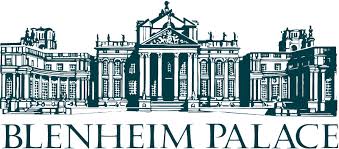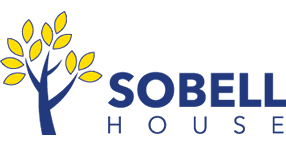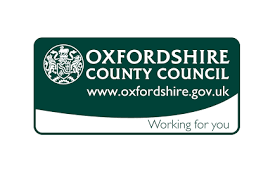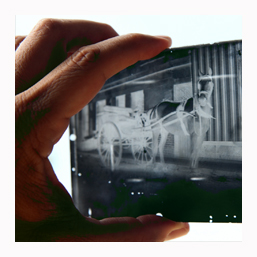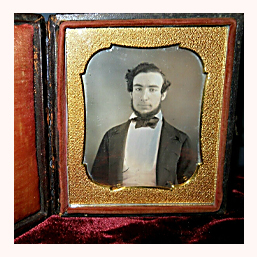Daguerreotype Glass Plate Scanning | Oxford UK
Archiving and Scanning Digitisation at Oxford Duplication Centre

Identifying and Preserving Daguerreotype Photos - Family
The introduction of the wet collodion process for making glass negatives by English sculptor Frederick Scott Archer in 1851 transformed the art of photography. It was a much faster and cheaper process, paper prints could be easily produced from the resulting glass plates, and details were rendered far more crisply than with daguerreotypes.
In 1854, James Ambrose Cutting of Boston took out several patents relating to the process, and thus may be responsible for coining the term "ambrotype." Ambrotypes are a particular application of the wet collodion process. Collodion - a mixture of “gun cotton” (a highly combustible material made by exposing cellulose to nitric acid), ether, and alcohol - was mixed with potassium iodide or bromide and poured evenly over the surface of the base material.
The plate was then soaked in silver nitrate solution, placed in a holder, exposed in a camera, and developed, all while still wet. To make the image appear positive the plate was backed by a black material, either cloth, paper, metal, or paint. As finishing steps, ambrotypes, similar to daguerreotypes, were often hand-colored and put in decorative cases. Ambrotypes are distinguishable from daguerreotypes by the silvery, reflective quality of the latter’s image
| LANTERN SLIDES, PHOTOGRAPHIC NEGATIVE GLASS PLATES, TINTYPES AND SHEET TRANSPARENCY SCANNING SOLUTIONS All plate, transparencies and x-rays are digitised to their respective dpi, unless you have specific requirements. Digitisation incorporates professional scanning software and machinery, specifically designed for digitising all transparency film types, perfect for high quality archiving, illustration and diagnostic purposes, all in line with The National Archives Standards. Please contact cheryl@oxfordduplicationcentre.com or call our offices on 01865 457000. |
||||||||||
|---|---|---|---|---|---|---|---|---|---|---|
| SIZE (INCHES) | SIZE (MM) | LANTERN SLIDES | 1+ | 10+ | 25+ | 50+ | 100+ | 500+ | 1000+ | 5000+ |
| 3¼ × 3¼ | lantern slides | 12.00 | 6.00 | 3.00 | 2.75 | 2.50 | 2.25 | 2.00 | 1.75 | |
| SIZE (INCHES) | SIZE (MM) | PHOTOGRAPHIC GLASS PLATES | 1+ | 10+ | 25+ | 50+ | 100+ | 500+ | 1000+ | 5000+ |
| 3¼ × 4¼ | 83 × 108 | "quarter-plate" | 12.00 | 6.00 | 3.00 | 2.75 | 2.50 | 2.25 | 2.00 | 1.75 |
| 4¾ × 6½ | 120 × 165 | "half-plate" glass plates | 14.00 | 7.00 | 3.25 | 3.00 | 2.75 | 2.50 | 2.25 | 2.00 |
| 6½ × 8½ | 216 × 165 | "full-plate" glass plates | 15.00 | 7.50 | 3.50 | 3.25 | 3.00 | 2.75 | 2.50 | 2.25 |
| SIZE (INCHES) | SIZE (MM) | SHEET FILM (TRANS OR X-RAY) | 1+ | 10+ | 25+ | 50+ | 100+ | 500+ | 1000+ | 5000+ |
| 4 × 5 | 102 × 127 | sheet film | 12.00 | 6.00 | 3.00 | 2.75 | 2.50 | 2.25 | 2.00 | 1.75 |
| 5 × 7 | 127 × 178 | sheet film | 12.00 | 6.00 | 3.00 | 2.75 | 2.50 | 2.25 | 2.00 | 1.75 |
| 4 × 10 | 102 × 254 | sheet film | 13.00 | 6.50 | 3.25 | 3.00 | 2.75 | 2.50 | 2.25 | 2.00 |
| 8 × 10 | 203 × 254 | sheet film | 14.00 | 7.00 | 3.25 | 3.00 | 2.75 | 2.50 | 2.25 | 2.00 |
| 7 × 17 | 178 × 432 | sheet film | 15.00 | 7.50 | 3.50 | 3.25 | 3.00 | 2.75 | 2.50 | 2.25 |
| 11 × 14 | 279 × 356 | sheet film | 16.00 | 8.00 | 4.00 | 3.25 | 3.00 | 2.75 | 2.50 | 2.25 |
| 8 × 20 | 203 × 508 | sheet film | 17.00 | 8.50 | 4.25 | 4.00 | 3.25 | 3.00 | 2.75 | 2.50 |
| 12 × 20 | 305 × 508 | sheet film | 18.00 | 9.00 | 4.50 | 4.25 | 4.00 | 3.25 | 3.00 | 2.75 |
| 14 × 17 | 356 × 417 | sheet film | 18.00 | 9.00 | 4.50 | 4.25 | 4.00 | 3.25 | 3.00 | 2.75 |
| 16 × 20 | 406 × 508 | sheet film | 19.00 | 9.50 | 4.75 | 4.50 | 4.25 | 4.00 | 3.25 | 3.00 |
| 20 × 24 | 508 × 610 | sheet film | 19.00 | 9.50 | 4.75 | 4.50 | 4.25 | 4.00 | 3.25 | 3.00 |



